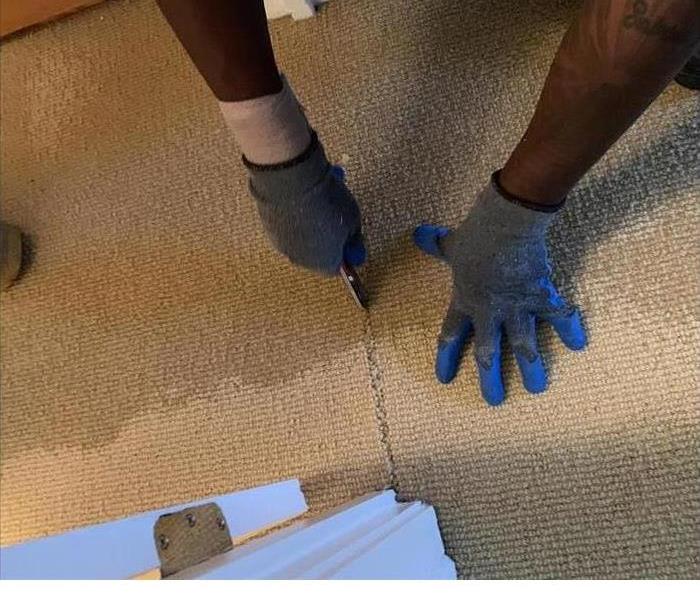The Different Stages of Water Damage and What To Do During Each Stage
5/23/2022 (Permalink)
 When water is left to sit too long, it can affect and destroy materials like carpet. Often, the carpet will need to be removed for proper drying.
When water is left to sit too long, it can affect and destroy materials like carpet. Often, the carpet will need to be removed for proper drying.
When water enters your home, it can be a stressful experience. There are many things you can do yourself during each stage of a water disaster to reduce the damage and restoration your Burlingame, Millbrae home will need. Knowing the signs of each stage and their effects is the first step to restoring your home to a safe, healthy space.
Stage 1
Water enters your home, flowing freely into any openings it can find, especially through floors and walls. Depending on the source of the water and the time that passes, your home can see inches of water in little time. At this stage, if possible, try to stop the source of the water and begin to dry up the areas you can.
Stage 2
Permeable materials like carpet, wood, drywall, and fabric furniture take on water. The longer the water sits, the more moisture that accumulates. Though the damage is not visible, swift water extraction is crucial in salvaging any wet material, lessening the need for complete water removal.
Stage 3
At this point, water that is able to evaporate will begin to create humid air. Areas that were not previously affected are in contact with moisture present. Paint may begin to chip from walls or bubbles may form on ceilings or carpets from the trapped condensation. This leads to further destruction of building materials as there is little room for drying to begin. To combat this stage, dehumidifiers are needed to remove moisture from the area and prevent mold growth.
Stage 4
Mold spores, found naturally in the air, settle on wet material, quickly growing. When left untreated, mold can spread in as little as 1 day. Entire homes can be affected by mold if it is not contained. Recovering valuable items and building materials is less likely at this stage. Serious water damage restoration and potential mold remediation are needed.
Flooding or leaks can occur at any time and quickly move through each stage before there is a chance to take action. If caught in time, water damage can be mitigated, reducing the need for a major restoration of your home and its contents.




 24/7 Emergency Service
24/7 Emergency Service